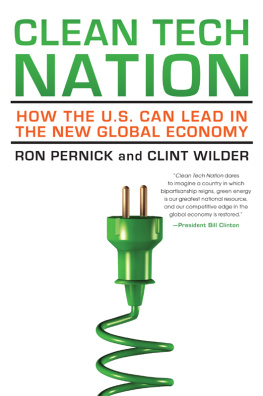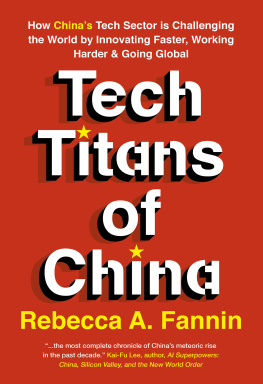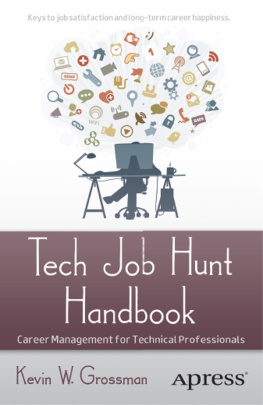THE BIRTH OF CLEAN TECH
Just west of Northern Californias windswept Altamont Pass, where some of Americas first clean-energy entrepreneurs installed wind turbines three decades ago, the seeds of a new energy revolution are taking root. Here in the Bay Area suburb of Livermore, at the sleek Silicon Valleystyle headquarters of Bridgelux, engineers in sterile bunny suits are fabricating wafers that house the tiny components for light-emitting diode (LED) lighting technology, the worlds most energy-efficient form of illumination. Bridgeluxs proprietary process, known as metal-organic chemical vapor deposition (MOCVD), is accomplished by intricate state-of-the-art machines costing as much as $2.5 million eachand by the well-trained, highly skilled workers who run them.
LEDs, the next wave in mass-market energy-efficient lighting, use up to 90 percent less electricity and last 25 times longer than comparable incandescent bulbs. The Bridgelux facility in Livermore opened in 2009 and was the first new LED complete-fabrication facility opened in the United States in more than two decades. There are 71 new LED factories in China, and none of them have the technology to do this yet, says Steve Lester, the companys chief technology officer and vice president of R&D, referring to the MOCVD process. I dont want to move to China. Ive been in the LED business for 24 years, and Im really passionate about this. If we can find a way to keep making LEDs in the U.S., we will.
Bridgelux, a venture-capital-backed startup headed by top Silicon Valley executive Bill Watkins, is well-funded ($220 million raised by March 2012) and growing. In an industry sector that has 95 percent of its products made in Asia and Europe, Bridgelux employs 250 people in Livermore, and 140 of them are in highly skilled engineering and R&D jobs. The company has big plans for expansion and good prospects for market acceptance. But even if the company succeeds, will Bridgelux be part of a much broader trend that revitalizes the U.S. economy in the face of unprecedented world competition? Or will it just be a unique, feel-good story in a gloomier context of diminished American leadership in global business, innovation, and economic growth?
The answer to that question will depend heavily on critical decisions that the nations policymakers, business leaders, and investors make in the next three to five years. We strongly believe that the U.S. has the brainpower, the business acumen, and the educational, financial, and natural resources to be the leading nation, with the most innovative and successful companies, in this new and emerging revolution. But we believe just as strongly that this will not occur if we continue on our present course. That is why we wrote this book.
CLEAN TECH AT THE FOREFRONT
As we forge ahead in the second decade of the 21st century, the U.S. economy is at a crossroads. It faces a frustratingly slow economic recovery from a devastating recession, record debt levels, high unemployment, a declining manufacturing base, rising income inequality, and a host of other challenges. At the same time, a dynamic, fast-growing, and potentially disruptive new industry, clean tech, has moved to the forefront as a central component of economic competitiveness among companies, cities, states, regions, and nations.
This did not happen overnight. Solar photovoltaic (PV) module technology, for example, is more than 50 years oldit was invented at AT&Ts legendary Bell Labs in 1954, with an eye toward powering spacecraft with the sun. The first large-scale wind turbine in the U.S. debuted in 1941. But for several decades, solar power, wind energy, and other current clean-tech mainstays languished far from the mainstream, the province of research scientists and off-the-grid, back-to-the-land devotees of alternative lifestyles.
Over the past ten years, however, clean techany product, service, or process that harnesses renewable materials and energy sources, reduces the use of nonrenewable natural resources, and cuts or eliminates emissions and wasteshas unquestionably claimed its place as a large-scale global industry. Clean tech encompasses a wide range of technologies in the energy, transportation, materials, and water sectors, including solar and wind power, hybrid vehicles, green buildings, high-efficiency lighting, and water-filtration membranes. It is now embraced by many of the worlds largest corporations and most influential investors, and by virtually all national governments in the industrialized world. Like the innovation-fueled technology revolutions that came before it in the late 20th centurycomputing, high-speed telecommunications, and the Internetall led, it should be noted, by the U.S.clean tech has enjoyed a very rapid growth trajectory as a global industry. From 2000 to 2010, the combined global market for solar PV and wind power grew more than twentyfold, from $6.5 billion to $131.6 billion. Add to that the $56.4 billion global biofuels industry and the Big Three clean-tech sectors accounted for $188.1 billion in 2010larger than the market for all retail online sales in the U.S.and are projected to grow to nearly $350 billion by 2020.

Clean-tech-related products and services have become a major component of business strategy, investment, and revenue for many of the worlds largest industrial giants, among them General Electric, Siemens, ABB, and Samsung. The biggest names in high tech, notably IBM, Google, Intel, and Microsoft, have embraced smart-grid technologies and other aspects of clean tech as a major new business opportunity.
In the arena of entrepreneurs and venture capital, clean tech has grown in the past decade from a tiny sliver of VC investments in the U.S. to nearly a quarter of total VC dollars in 2010, according to annual tracking by the Cleantech Group research firm. That puts clean tech right up there among traditional VC-attracting sectors such as software, telecommunications, biotech, medical devices, and Internet technology.

DEEPLY IN THE MAINSTREAM
In terms of deployment, clean tech has become a key, growing, and increasingly mainstream component of energy supply and daily life in many places around the world. Consider the following:
- The states of Iowa, North Dakota, and California each generate more than 10 percent of their electricity supply from wind, solar, and/or geothermal power.
- U.S. renewable energy reached a major milestone in the first quarter of 2011, surpassing energy production from nuclear power. Renewable energy sources (biomass/biofuels, geothermal, solar, hydroelectric, wind) provided 2.245 quadrillion BTUs of energy, or 11.73 percent of total U.S. energy production, in the first quarter of 2011, beating out nuclear powers 2.125 quadrillion BTUs. While nuclear powers contribution has remained relatively unchanged in recent years, the contribution of renewable energy has shown steady double-digit annual growth.
- In Denmark, Portugal, and Spain, wind power contributes more than 15 percent of the electricity supply nationwide. During March of 2011, wind became Spains leading source of electricity for the first timecovering 21 percent of the countrys demand for the month and beating out other sources like nuclear (19 percent) and hydroelectric (17 percent).













